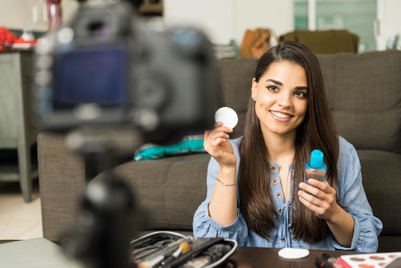
"Tell me, I'll forget. Show me, I'll remember. Involve me, I'll understand", goes a Chinese proverb. While I’m not entirely sure how long this proverb has been around, there is certainly a lot of relevance in it to marketing a brand in today’s world.
Of all our senses, science says vision is the most receptive to persuasion. The fact that the humble product demonstration is one of the most effective sales techniques adds to this claim. Good product demos have helped brands establish long-term positions and wonders for short-term sales.
Door salesman and promoters use this skill everyday with telling effect. Household, kitchen, laundry, beauty, health, food, diapers, tyres, pens and sanitary pads are categories where brands use product demonstrations to highlight a product superiority or innovation, as their brand story. The “As Seen On TV” company combines salesmanship with smart demos to sell products people don't need every night.
The advent of the web offered brands the opportunity to not just show, but involve people in their demos at scale. Starting before the days of social networks, Blendtec was one of the first with its brilliant "Will it blend?" product demos. The story goes that George Wright, the CMO, was walking around the company and saw the CEO testing a blender on bizarre objects. Whilst this was norm for the employees at Blendtec, the CMO thought otherwise. It was the germ to create the demonstration campaign and evolve it by involving people to steer the campaign forward.
GoPro is another great example of a brand that uses demos effectively, by involving adrenaline enthusiasts to demo its products. Chosen athletes, travel and extreme sports enthusiasts create amazing video content as inspiration. A cool social campaign to award a daily winner completes the loop by nudging everyday people to jump in and involve themselves.
In my opinion, Volvo's "Epic Spit" is the best product demonstration ever. The 77-second exhilarating demo of precision driving technology moved people to share at scale. The great casting and craft also helped drive the 74 million plus views. The mileage from the memes was an icing.
The Blendtec, GoPro and Volvo examples prove brands can involve willing people into their demo to tell their story.
However, brands often cross the line of involving people in their demos. The recent example of Kiehl's new moisturiser for men comes to mind. In a Stratos-inspired sequel, Kiehl's built a ballon-powered space vehicle, strapped on cameras and sent the product into space. All this to demo its ability to perform against extremes. As an extension, Keihl's also ran a consumer contest. Winners stood a chance to have a 3D printed action figure of themselves take the ride into the stratosphere. Why?
I respect Kiehl’s and its products. When it claimed an Everest Expedition team used its product to get close shaves in extreme weather, I even bought one. But I have to admit this Stratos-inspired sequel did nothing for me, neither as a consumer nor as an observer. Could this space and technology expertise solve a more pressing human problem? Yes. But that's another story.
A note of caution for brands planning to use the demonstration route. Merely demonstrating product benefits is not a surefire guarantee of success. If demonstrations are dull or un-involving, they can even be counterproductive. Demos must be integrated into the story of the brand in order to convince people to join in.
Combine charm, humour, and taste with a great idea around the lives of people into your product demo. Heck, people will jump in and tell your story themselves. In droves. Alright, at least your enthusiasts will.



.jpg&h=334&w=500&q=100&v=20250320&c=1)


.jpg&h=334&w=500&q=100&v=20250320&c=1)




+(900+x+600+px)+(3).png&h=334&w=500&q=100&v=20250320&c=1)

+(1).jpg&h=268&w=401&q=100&v=20250320&c=1)


.png&h=268&w=401&q=100&v=20250320&c=1)

.jpg&h=268&w=401&q=100&v=20250320&c=1)
